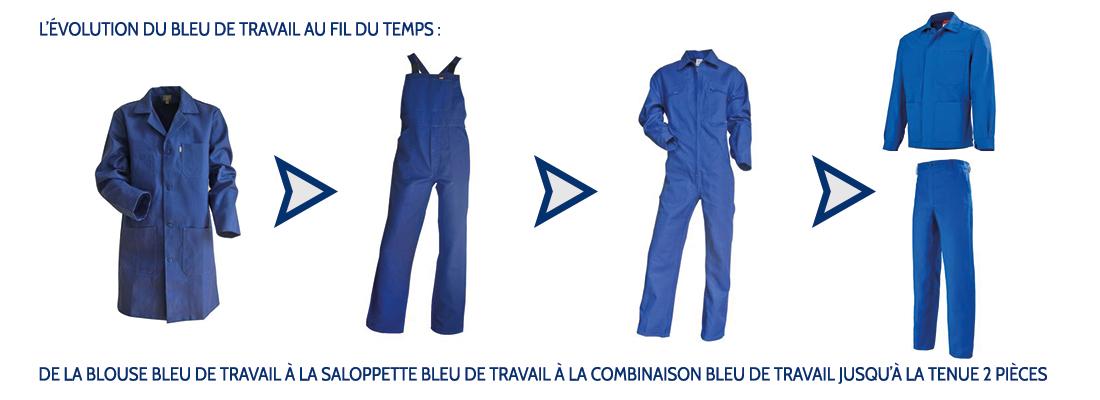Why the work blue made its return<
Those who have worn it daily during an entire career would not believe their ears: for a few years, working blue has returned to fashion.In jacket, shirt or surgery, in combination, unisex or not, it flowers in large city centers.Taken up by stylists, there are even several hundred euros.
For the historian specialist in work clothing Jérémie Brucker, no doubt: "the object in itself has turned on".
To understand this return, we must be interested in the journey of blue and how he lost his symbolism.
The first forms of blue appear in the beginnings of the industrial revolution.In the midst of an industrial revolution, the rates increase, raising the risk of workers' injuries.We then want to protect workers from industry or mechanics.It is cut in a practical way, with large pockets to store tools, often designed in moleskine, a material that resists friction and burns.
The blue color of Prussia is often chosen, for a question of chemistry and manufacturing cost.First competed by brown, kakis, blue takes time to symbolically fix itself as the color of the worker, well helped by cinema.
From May-68 to feminist demonstrations of 2020

Blue first appears in the street during the demonstrations of May 68, as if to mark the convergence of student and workers' struggles.The same approach will also be adopted by feminist demonstrators 50 years later, in the blink of an eye to Rosie The Riveter, a character who became an American feminist icon.
The 1970s arrive: the first factories closed, blue no longer makes the pride of their workers, who abandon this garment or prefer other colors.He no longer has the coast among workers;The intelligentsia fear then seize it.Starting with an artist, New York photographer Bill Cunningham.Then, the stylists appropriate it, like Marithé and François Giraud in the early 1980s.
Then you have to jump in the 2010s to observe your return “Streetwear» version.The thrift store begins to recover blues and to restart them.Creators bring it up to date, in 2011, with Parisian (paname blue) and even Japanese (like boys) brands).Some factories, specialized in work clothing, glamorizes protective equipment, such as Mont Saint-Michel or Lafont.
Feeling the craze for the second hand and the made in France, entrepreneurs rush into the trend of "workwear", at a time when "fast-fashion" is no longer popular.This is the case of the ABOUT A WORKER collective, which involves workers in the revisation of work clothing.
“At present, I see in a number of students, young people who want to slip into the shoes of their grandfather or father, explains Jérémie Brucker.It is ultimately a way of touching their privacy, their experiences ».Even if, he recognizes, the blue version 2021 touches according to him “a privileged segment, rather urban».
300 to 400 euros
Haute couture finally takes blue, like Inès de la Fressange.Jean-Paul Gaultier, meanwhile, marks his latest parade in 2020 by sporting a.Corollary of this craze: sometimes disconcerting selling prices, up to 300 or 400 euros each.
Blue would have lost its symbolism.From there to see a gentrification of the garment, there is only one step."Wearing an object that does not belong to us, it has the advantage of not exposing your personal or professional identity since we wear the skin of another, describes Jérémie Brucker.But he is completely diverted and he has nothing to do with his primary function.It is called a working blue;In fact, I think it's an abuse of language.»


 Tags:
Tags: Prev
Prev







